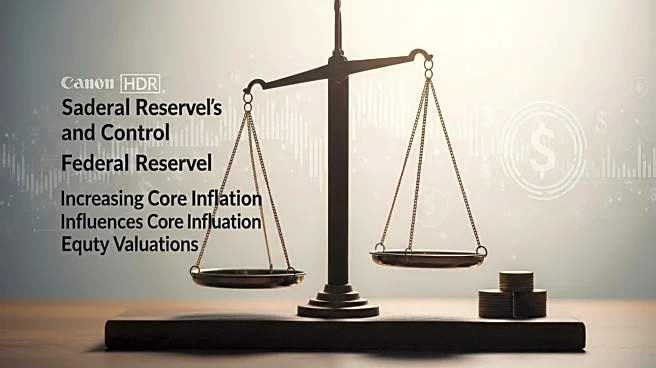What's Happening?
The Federal Reserve is navigating a complex economic landscape marked by persistent inflationary pressures and a fragile labor market. Despite a moderation in headline inflation from post-pandemic peaks, core inflation remains above the Fed's 2% target. The July 2025 Consumer Price Index (CPI) data showed a 0.3% monthly increase in core CPI, with a 3.1% annualized rate, driven by rising shelter costs and tariff-related price hikes. The Fed's reliance on the personal consumption expenditures (PCE) index, currently at 2.9% year-over-year, adds nuance to its decision-making. Investors are adjusting strategies to hedge against inflation while anticipating potential rate cuts, with BlackRock recommending diversification into commodities and international equities.
Why It's Important?
The Fed's cautious approach reflects the delicate balance between maintaining price stability and supporting a cooling labor market. The potential rate cuts anticipated by J.P. Morgan could favor equity income strategies and impact the yield curve. Investors are preparing for prolonged policy uncertainty, emphasizing liquidity and inflation-linked assets. The Fed's decisions will significantly influence economic stakeholders, including businesses and investors, as they navigate inflation risks and market volatility. The interplay between inflation nowcasting and Fed policy is critical, with high-frequency data suggesting stabilization in goods inflation but persistent services inflation.
What's Next?
The Fed's path forward involves disentangling transitory tariff effects from persistent inflationary forces. Internal debates within the Federal Open Market Committee highlight the challenge of balancing inflation control with avoiding a recession. Investors should brace for continued policy uncertainty, with strategies focusing on resilience against inflation and market volatility. The Fed's ability to calibrate policy in a world of unreliable traditional indicators will be tested in the coming months.
Beyond the Headlines
The Fed's policy decisions have broader implications for economic stability and investor confidence. The reliance on high-frequency data and nowcasting models underscores the evolving nature of economic analysis. The Fed's cautious stance reflects the complexity of managing inflationary pressures in a globalized economy, with potential long-term shifts in investment strategies and economic growth patterns.











